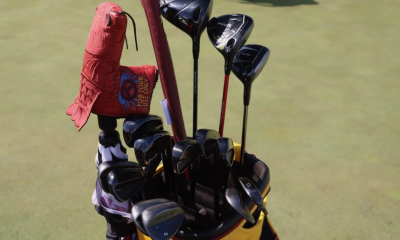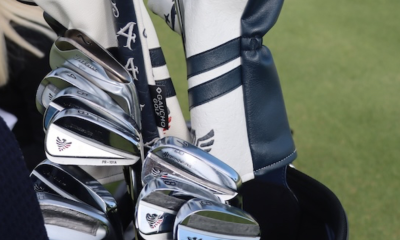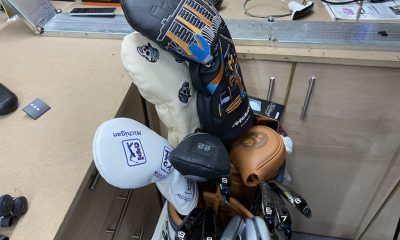19th Hole
A hacker plays the big ones: Pt. 3
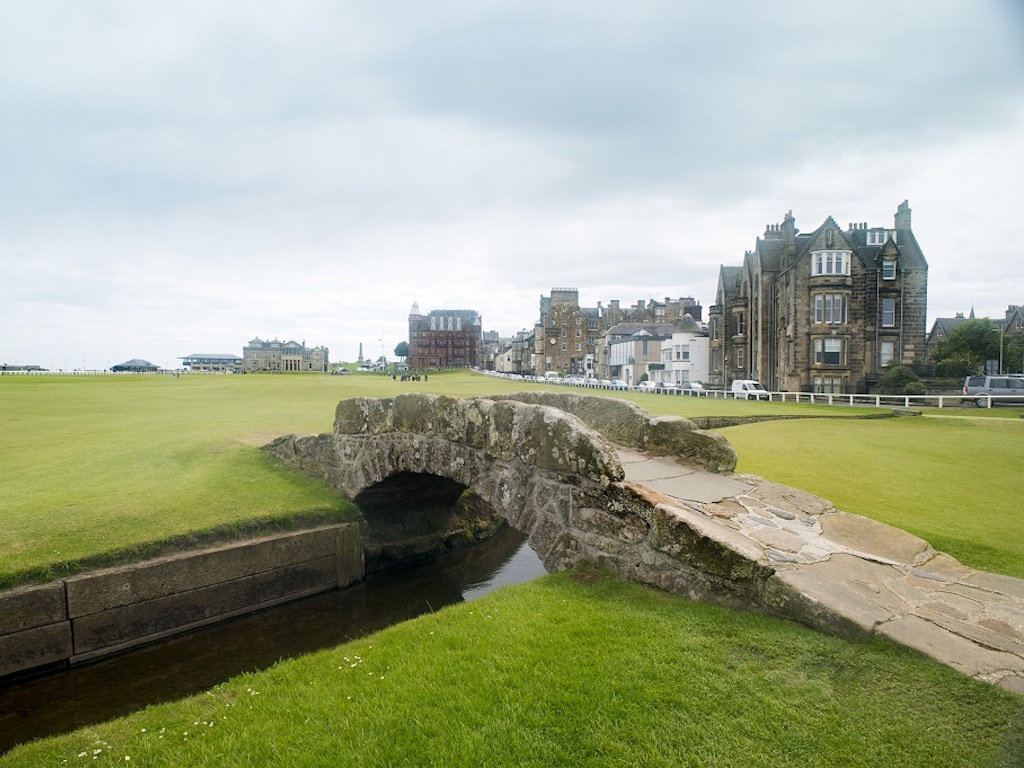
A Hacker Plays The Big Ones” is a short story authored by Steven R. Roberts. The short story, written two months following the trip, tells the tale of Roberts and his friend, Bob Blackman’s, golf odyssey around Scotland in the 1970s where the two played four of most historic courses in the game: St. Andrews, Carnoustie, Muirfield and Gleneagles.
We have broken the short story into a four-parter and will publish Part 4. of the story in the coming days.
Bob and I hadn’t had much to say to each other on the trip down from Perth, but the normal golf babble broke out as we saw the Royal and Ancient Clubhouse and sensed the moment was near.
“What if we take a divot?” I asked.
“You replace it. What else?” Bob said.
“I was just imagining a juicy chunk of this place framed, under glass, hermetically sealed and hanging in my den back home,” I said.
“I think you may be having a histrionic, historic fit,” Bob said.
He was right. I needed to pull myself together and get mentally tough for the match of the day. There was a lot of ground to make up on Bob and the wooden-shafted devil.
I leaned over the first tee rail and held out the money to pay for the greens fees.
“Step baack, lod,” the cashier man said. “I’ll tull ya when ya kin pie.” The cashier and the starter were definitely in control of when and if those of us standing in the misty rain could play.
George III could have used these guys. The King outlawed the game twice during his reign. Even in those days, politicians would stoop to any level for the ladies’ approval.
After the setback involving a pink tee, and after I hit my second shot into the Swilcan Burn that runs in front of the first green, we were on our way. I took a double-bogie six and thought I understood better why they call the stream a burn.
The course was essentially a narrow strip of land along the sea, with the front nine going out and the second nine coming back. Some of the greens were so big they were used for a hole going out on one half of the green and a pin on the other side of the green for the hole coming back. Some fairways are also shared and, in fact, two of the fairways crossed each other.
My round for the day seemed almost of secondary importance as I drank in the history and stark beauty of the course jammed against the rugged sea. I managed to concentrate long enough to birdie 14 and 15; Bob birdied 3 and 12.
In the end, I had some disasters and finished with an 81 while the devil and his friend had a steady 78. It just goes to show, you must be very careful in choosing your traveling friends. Next time I’m going to find somebody 75 years old with a bad back and enough social grace to give me a few three-footers.
In no time at all, it hit me that the long-awaited round was going to be over too soon. The mist had stopped by the time we looked down the fairway from the 17th tee. The tee shot on the notoriously difficult hole must start down the left side of the fairway and fade or go over the edge of the hotel positioned helplessly at the corner of the dogleg. We navigated the corner successfully but noticed many pock marks on the side of the building from less fortunate.
Bob and I walked up on the 18th tee just 2 hours and 45 minutes after teeing off. Off to our left, we could see the first tee was still crowded with players anxious to chase their dreams. I walked tall, visualizing the thousands of spectators standing along Golf Avenue to the right and the grandstands behind the square green holding 8,000 fans on tournament Sunday.
This was the final hole, and I had a chance to win the British Open by besting Palmer and Nicklaus by a stroke. I needed only a par on the final hole. I visualized a par because there was no way I could birdie the hole in front of thousands of people and all of the press and TV crews jammed against the ropes. Actually, Doug Sanders walked up to his drive the final day in 1972 needing only a par to win. I looked for Sanders’ divot, but it had healed over.
Bob and I were both over the road that bisects the hole and Bob was away. Let me clarify. I out-drove good old Bob. He hit a pitch and run shot that reached the front edge of the green.
For me, it was enough of a test just to pull the club back for the second shot. I selected a wedge and went down through the green sod, soaked by rain the night before while I had been incarcerated.
My shot took off high but was pulled to the left, just catching the edge of the large green. The crowd went nuts, or so it seemed. As I walked forward to pick up the turf and return it to its honored place, I took one last look back at St. Andrews.
“I’ll be back someday, old man by the sea,” I said out loud. “You will know me. Next time I’ll have a left-handed, wooden-shafted putter and you won’t have a chance.”
Bob struck his 120-foot putt well with that stupid-looking putter. The ball hit the hole and stopped two inches away. The two people clapping as they walked along the railing behind the green represented the 20,000 there each time this course hosts the Open Championship.
If I could somehow sneak in my 32-footer, I could pull within five shots of the young, albeit cheating, left-handed Australian. My putt was pure and in all the way but somehow hit the lip and spun out. The couple along the rail let out an “ohuuu” in unison.
Is there no justice? As I lined up the curling two-footer return putt, I remembered that Doug Sanders had this same putt to best Jack Nicklaus and win the championship in 1972. The official silversmith was already carving his first name in the trophy when the unbelievable happened. Sanders missed the putt. He would go on to lose the playoff with Nicklaus the next day.
Out of respect, I too missed the very same two-footer. I could have made it if I had wanted to. Honest, I could have
Coming soon: A Hacker Plays The Big Ones Pt. 4
- LIKE0
- LEGIT0
- WOW0
- LOL0
- IDHT0
- FLOP0
- OB0
- SHANK0
19th Hole
Butch Harmon reveals what he worked on with Rory McIlroy during visit earlier this year

While speaking on the “Son of a Butch” Podcast, legendary swing coach Butch Harmon revealed what he worked on with Rory McIlroy when the four-time major champion went to visit him after the Players Championship this season.
Butch Harmon on what he worked on with Rory:
“The work I did with him wasn’t a tremendous amount of changing what he did, it was his attitude and the way he played certain shots. From 150 yards and in he made a full swing like he was hitting a driver and I wanted him to make…
— Matt Vincenzi (@MattVincenziPGA) May 15, 2024
“The work I did with him wasn’t a tremendous amount of changing what he did, it was his attitude and the way he played certain shots. From 150 yards and in he made a full swing like he was hitting a driver and I wanted him to make more 3 quarter swings and chop the follow through off a little. He’s a very high ball hitter, but with short irons high balls aren’t good, it’s hard to control, we wanted to bring the ball flight down.”
The work certainly seemed to help McIlroy, as he went on to win the Zurich Classic alongside Shane Lowry and the Wells Fargo Championship at Quail Hollow in back-to-back starts.
Rory will now tee it up at Valhalla for the PGA Championship, which is the site of his most recent major victory in 2014.
More from the 19th Hole
- Phil Mickelson drops big retirement hint; Says LIV will grow the game “on a much more global basis”
- 2-time major champ announces shock retirement from the sport at age of 33
- Tiger explains why golf has “negative connotations” for daughter Sam
New here?
- LIKE9
- LEGIT2
- WOW0
- LOL0
- IDHT0
- FLOP0
- OB0
- SHANK2
19th Hole
Brandel Chamblee says this technological development was key to Phil Mickelson winning major championships

While speaking with GolfWRX, Golf Channel’s Brandel Chamblee shared that he believes the solid core golf ball helped Phil Mickelson win major championships.
“One of the consequences of the solid core golf ball coming around was it put the straightest of hitters in the rough.
“Phil started winning majors in 2004, I don’t think that’s any coincidence. I think he started winning majors after the solid core golf ball came along and put everybody in the rough.
“And so [Phil] is like ‘I got you in the rough, I’m going to kick your a**. This is my game. I’ve been in the rough my whole career. I can go over trees, through trees, around trees.’
“Because he’s got that amazing creativity and Phil is an underrated iron player, phenomenal iron player. Great, great great out of the trouble. If you put the top-40 players on a list and ranked them in terms of accuracy, he would be 40th.
“So, I think that was one of the consequences of the solid core golf balls was it allowed Phil to win major championships.”
Mickelson went on to win the Masters in 2004 as well as five additional majors from 2004-2021 including three total Masters, two PGA Championships, and an Open Championship.
Check out the full interview with Chamblee below:
More from the 19th Hole
- Phil Mickelson drops big retirement hint; Says LIV will grow the game “on a much more global basis”
- 2-time major champ announces shock retirement from the sport at age of 33
- Tiger explains why golf has “negative connotations” for daughter Sam
New here?
- LIKE7
- LEGIT4
- WOW2
- LOL1
- IDHT0
- FLOP3
- OB1
- SHANK14
19th Hole
Former Augusta National employee pleads guilty to transporting stolen Masters memorabilia; Arnold Palmer’s green jacket among stolen items

The document was filed in the U.S. District Court for the Northern District of Illinois.
Since then, more details have emerged about the case.
According to Darren Rovell of Cllct, one of the items that was stolen was Arnold Palmer’s green jacket.
The Chicago Tribune also reported that Globensky was able to steal the merchandise due to his role as a former warehouse coordinator at Augusta National who oversaw the Masters merchandise that was sold.
Rovell states that “A source with intimate knowledge of the case said an Augusta National member, who knew the jacket was missing, contacted a well-known collector who had gained a reputation for tracking down rare items. The member’s goal was to return the jacket to Augusta under the guise of purchasing it in a private sale.”
The plan worked, and the man agreed to sell the jacket for an agreed upon price of $3.6 million. After the sale was complete, the FBI swarmed the house of the thief.
Cllct also reported that Globensky pled guilty in a federal court in Chicago on Wednesday and now faces up to 10 years in prison.
The Chicago Tribune adds that Globensky’s plea deal includes an agreement to provide the government a cashier’s check for $1.5 million in the next few days.
More from the 19th Hole
- Phil Mickelson drops big retirement hint; Says LIV will grow the game “on a much more global basis”
- 2-time major champ announces shock retirement from the sport at age of 33
- Tiger explains why golf has “negative connotations” for daughter Sam
New here?
- LIKE1
- LEGIT0
- WOW1
- LOL1
- IDHT0
- FLOP0
- OB0
- SHANK1
-
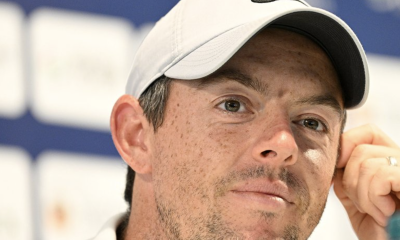
 19th Hole3 days ago
19th Hole3 days agoBrandel Chamblee says this is the primary reason why Rory McIlroy hasn’t won a major in 10 years
-
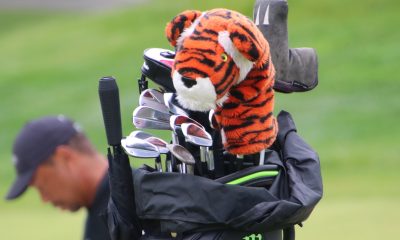
 Whats in the Bag4 days ago
Whats in the Bag4 days agoTiger Woods WITB 2024 (May)
-

 19th Hole2 weeks ago
19th Hole2 weeks agoReport: LIV star turns down PGA Championship invite due to ‘personal commitments’
-

 19th Hole2 weeks ago
19th Hole2 weeks agoGary Player claims this is what ‘completely ruined’ Tiger Woods’ career
-

 Equipment1 week ago
Equipment1 week agoDetails on Justin Thomas’ driver switch at the Wells Fargo Championship
-
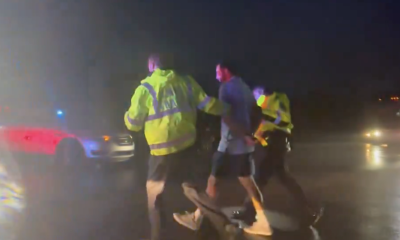
 News1 day ago
News1 day agoScottie Scheffler arrested, charged, and released after traffic incident at Valhalla
-

 Whats in the Bag3 weeks ago
Whats in the Bag3 weeks agoTeam McIlowry (Rory McIlroy, Shane Lowry) winning WITBs: 2024 Zurich Classic
-

 Whats in the Bag2 weeks ago
Whats in the Bag2 weeks agoKeegan Bradley WITB 2024 (May)















